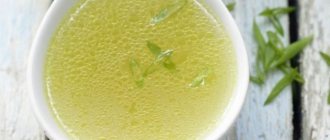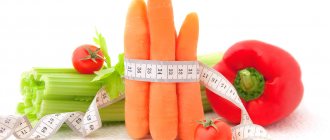Paleo Diet Principles
The basic principle of the paleotic (paleo) diet is to return a person to a natural diet - that is, to the foods that the distant ancestors of people ate in the Paleolithic era. Then there were no harmful additives, fast food or preservatives, and people ate fruits and roots that they collected in the forest. Sometimes hunters killed game, and the tribe ate fresh meat. All products were natural and healthy, and in order to get food, you had to work hard. Therefore, our ancestors did not overeat and were slim.
It is clear that modern man will not go into the forest to dig roots or throw a spear at a mammoth. And the food will still have chemical additives in the form of pesticides, growth promoters or antibiotics. But the goal of the paleo diet is to reduce the amount of these harmful substances to a minimum and allow a person to get as close to nature as possible.
Features of the paleo diet
This diet allows you to add a lot of animal protein and fiber to your diet and reduce the amount of starch and carbohydrates. This diet helps stabilize blood sugar levels and prevent you from consuming excess calories.
Features of the paleo diet are that a person should eat three times a day. The amount of food is not limited, but you can only eat a certain set of products that are natural. The ideal interval between meals is 5 hours, 3 of which are spent on digesting food, and another 2 hours for the digestive tract to rest from stress. At this time, the body breaks down fat reserves, as it needs a constant supply of energy. Therefore, large intervals between meals help to get rid of excess weight and normalize intestinal function.
However, snacking is not prohibited on the paleo diet. However, you are allowed to eat only healthy and natural products that can be picked from the garden, and you can only drink clean water between meals.
Sometimes the paleotic diet and raw food diet are confused, but these are completely different principles of nutrition. The paleo diet allows any heat treatment of food. And since it prescribes the consumption of a lot of meat and fish dishes, it is impossible to combine it with a raw food diet.
What to do now?
Think about the benefits of the lifestyle of your ancestors,
including fresh food, fresh air, plenty of exercise, good sleep and a strong social network. How much of it could you get under current conditions?
Think about switching
away from processed life and 21st century foods to choices that better suit the needs and preferences of your “ancient” body. Find out a little more about your ancestors. Evolution is cool. Dig into your roots: Where did your ancestors come from? How did they eat in ancient times? 23AndMe can tell you.
Keep it simple and think common sense.
Doing a few good things even better (getting a little more sleep or eating more fresh vegetables) is much better than trying to make everything “perfect.”
Stay critical and informed.
Avoid dogmatic or cult-like thinking. Be skeptical. Look for evidence. Keep asking questions. Eating like your ancestors is a very good idea and may turn out to be more or less correct; just use your later emerging prefrontal cortex (your “thinking” brain) when considering all the options.
Help your “old” body (and trillions of little helpers) do its job.
Our bodies are resilient. We wouldn't become one of the dominant species on the planet if we were as fastidious and delicate as flowers. However, think about how you can nourish your body optimally, giving it and your microbiome the best chance to survive and thrive.
Benefits of the Paleo Diet
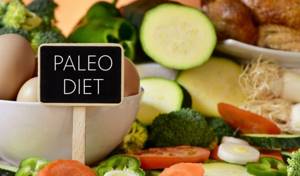
The benefits of the paleo diet include many benefits. Firstly, completely avoiding sugar and fast carbohydrates helps prevent the development of diabetes and obesity and normalize metabolism. Nutritionists have long proven that people consume extra calories through foods rich in glucose. Therefore, the paleo diet is especially useful for people who are prone to obesity or have a hereditary predisposition to diabetes.
Fiber, which is part of vegetables, improves digestion and intestinal motility. It helps normalize stool and get rid of heaviness in the stomach.
Foods allowed on the Paleo diet do not contain gluten. This harmful component increases allergic reactions. Therefore, after switching to a natural diet, many people’s allergies disappear.
Criticism
While those who choose the Paleo diet enjoy excellent results that go well beyond endurance and leanness, opponents question the principles of such nutrition.
In 2015, the prestigious British Dietetic Association recognized cave eating as the worst option for losing weight. According to members of the Association, it is unbalanced, questionable, and risky due to a lack of nutrients.
Nutritionists also believe that the scientific basis for the benefits of such a diet is only partially correct, because evolution does not stand still, which means that our genes differ from the genes of our ancestors.
Some experts emphasize the dubious results when losing weight, since large plumbs cannot be achieved here. Gastroenterologists and therapists note that the effectiveness of treating intestinal diseases and autoimmune diseases has not been proven.
Despite criticism from experts, the diet continues to gain popularity. Among her fans were such Hollywood celebrities as Miley Cyrus, Megan Fox, Jessica Biel, Jack Osbourne and even the stunning Uma Thurman.
Disadvantages of the Paleo Diet
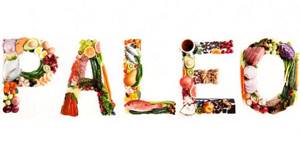
The main disadvantage of the paleo diet is the excessive consumption of animal protein, that is, meat and fish. Therefore, the paleo diet is not suitable for vegetarians. After all, many plant products are prohibited, so without meat food the diet will become very meager. Getting the necessary energy and preparing delicious meals will be problematic. A similar problem may arise for those who fast.
Natural products are more expensive and more difficult to prepare. Stewing meat or vegetables will take much longer than preparing semi-finished products. This may be inconvenient for busy people. You won’t be able to dine on fast food either; you’ll have to look for a canteen that sells dishes made from approved products, or take a snack with you.
The Paleo diet offers many animal-based foods, but there are dangers in this too. Excessive meat consumption overloads the gastrointestinal tract, accelerates aging and increases the risk of developing cancer. Therefore, it is important to choose the right menu for the week so as not to overload yourself with animal proteins. After all, our ancestors could not buy meat and fish whenever they wanted, and hunting and fishing were not always successful.
What evidence?
Despite assumptions based on evolutionary trends, hunter-gatherers did not actually enjoy perfect health. They were undoubtedly home to various parasites and were also susceptible to many infectious diseases.
A recent study published in the Lancet examined 137 mummies from various societies in Egypt, Peru, the American Southwest, and the Aleutian Islands for signs of atherosclerosis. Signs of probable or existing atherosclerosis were found in 47 of 137 mummies in each geographical region, despite the difference in occupation - farmer or hunter-gatherer. Everyone had arterial damage, regardless of lifestyle.
A reason to think.
Allowed and prohibited foods on the paleo diet
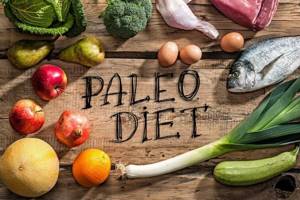
Allowed foods on the paleo diet are any vegetables, fruits, berries and nuts. The consumption of meat and eggs is also allowed, and preference should be given to farm products. Meat should be taken fresh and unprocessed and cooked yourself. Ready-made dumplings, sausages, and cutlets are strictly prohibited as they contain many artificial ingredients.
Eating fish is also allowed as long as it is wild and not captive-bred. Seafood can be eaten without restrictions, but only if it is sold frozen and not processed.
Prohibited foods on the paleo diet are all flour products, sugar and grains. Ancient people did not know these products. You will have to exclude bread and all pastries, cereals, pasta and sweets from your diet. It may be difficult and unfamiliar at first, but all these foods are harmful due to their high glycemic index and avoiding them is good for your health.
Dairy products are also prohibited. In ancient times, people did not milk livestock, and only infants drank milk. Therefore, the gastrointestinal tract of an adult is not adapted to the absorption of lactose.
It is undesirable to consume sweeteners and desserts, even if they use fructose instead of glucose. If you want something sweet, you can replace confectionery products only with natural honey or fruit.
Vegetable oil is allowed to be added to food, but you need to choose unrefined and unclarified oil, containing a minimum amount of harmful additives. Light bottled oils sold in stores are not suitable for the paleo diet.
Alcohol is also prohibited. Ancient people did not know what ethyl alcohol was. The human body reacts to it as if it were poison, and quitting alcohol will help prevent serious health problems.
How to adapt to the food system
You need to understand what the Paleo diet is. This is a living food for health. Therefore, you should simply evaluate your strengths - do you need such a program? Can you forget about your favorite buns or pasta with mayonnaise and sausages? If this is serious stress for your body, give up this system and choose another one for yourself. But keep in mind that with any long-term diet, the body is forced to rebuild.
In addition, you can give up your usual and favorite foods gradually. By reducing portions, excluding one or another product from your diet, you will eventually readjust and get used to a new type of nutrition.
What is the paleo diet? This is a system aimed at overall health of the body. The Paleo diet has quite effective results. This means it is suitable for those who have been struggling with excess weight for a long time. And also for those to whom the concept of “healthy lifestyle” is not alien. Many adherents of proper nutrition easily get used to such a program, since they prefer fresh, raw foods.

Paleo diet contraindications

The Paleo diet is strictly contraindicated for people with liver or kidney disease, as excess protein in the diet can raise ammonia levels. Removing this toxin increases the load on diseased organs. If they fail and ammonia is not removed, poisoning may occur.
This diet is not recommended for pregnant and lactating women, since carbohydrates and microelements contained in cereals are necessary for the development of the child and milk production.
Athletes and people who attend intense training sessions are also not suitable for this diet. Working muscles use energy from carbohydrates to contract. If there is not enough sugar in the blood, then athletic performance will drop and you will not be able to take high places in competitions.
This diet is also not suitable for children under 18 years of age. Milk and cereals are beneficial for a growing body, and limited consumption of sweets by a child does not lead to obesity. However, if adult family members follow a paleo diet, there is no need to cook separately for the child. It is enough to diversify its menu with bread, dairy products and cereals.
It's evolution baby
Many Paleo proponents have recently come to understand and encourage the addition of starches in moderation (though less choice than I would prefer), some dark chocolate, red wine, and “non-grain” alcohols (like tequila), as well as dairy (if condition of feeding livestock with grass). These additions make life much more enjoyable and healthy eating more attractive and achievable. In fact, this new "indulgence" may partly explain why the Paleo diet continues to gain popularity among the general population. Ultimately, sanity and your personal preferences trump any specific food list, antinutrient avoidance, or evolutionary theory.
Paleo diet menu for the week

Let's take a closer look at the paleo diet menu for the week (day by day).
Monday
- Breakfast:
2-3 egg omelet with coconut milk, apple or pear. - Lunch:
chicken breast baked with cauliflower, salad of herbs and tomatoes, dressed with olive oil. - Dinner:
stewed cabbage with chicken liver, a handful of nuts.
Tuesday
- Breakfast:
two poached eggs, light green salad. - Lunch:
beef soup, vegetable salad. - Dinner:
chicken breast stewed with zucchini and eggplant.
Wednesday
- Breakfast:
2-3 hard-boiled eggs, apple, asparagus salad. - Lunch:
river fish soup, stewed cabbage, nuts. - Dinner:
Beef chops with cauliflower puree.
Thursday
- Breakfast:
scrambled eggs with broccoli, apple. - Lunch:
baked pork ribs, fresh vegetable salad, dressed with olive oil. - Dinner:
vegetable soup, nuts.
Friday
- Breakfast:
omelet with cherry tomatoes, a glass of berries or an apple. - Lunch:
chicken broth with spices and herbs, stewed zucchini, nuts, orange. - Dinner:
fried or baked sea fish, herb and tomato salad.
Saturday
- Breakfast:
2 fried eggs, greens, nuts. - Lunch:
roast beef, vegetable stew. - Dinner:
stewed pumpkin, apple or glass of berries.
Sunday
- Breakfast:
2 soft-boiled eggs, light vegetable salad. - Lunch:
chicken or duck baked with apples and spices, greens. - Dinner:
vegetable soup, apple or orange.
Recipes from the paleo diet menu
Below are some recipes from the paleo diet menu.
Scrambled eggs with broccoli

Place 200 grams of broccoli in boiling water and cook for 5-6 minutes, then remove and add cold water. Place a frying pan on gas. While it's heating, separate the broccoli into florets and mince the garlic clove. Pour a little unrefined oil into the pan, add broccoli and garlic, then pour 2-3 eggs over them. Add salt and spices to taste, cover with a lid and fry until done. These scrambled eggs are best served hot.
Chicken breast baked with cauliflower
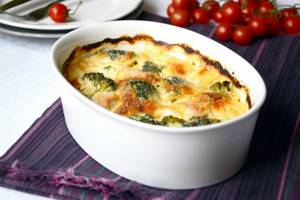
Wash 300 grams of cauliflower, divide into small inflorescences, pour boiling water and leave for 10 minutes. At this time, cut the chicken breast (200g) into small pieces, pepper and salt, add your favorite spices to taste. Prepare a baking dish and grease it with oil, place the chicken pieces there.
Drain the cauliflower and place it on a paper towel to remove excess moisture. Then place a layer of cabbage on top of the chicken. Beat 2 eggs with a pinch of salt and pour this batter over the casserole. Bake in an oven preheated to 180 degrees for 40 minutes.
Cabbage stewed with chicken liver

Rinse half a kilo of liver, remove veins and cut into small pieces. Peel 1 medium carrot and grate it, finely chop 1 onion. Fry carrots and onions in a frying pan until soft, then add liver to them. Add salt and pepper to taste and fry for another 5 minutes, stirring occasionally.
Finely chop the cabbage (400-500 g) and add to the liver. Simmer over low heat for another 20 minutes, stirring occasionally. If the cabbage starts to burn, you can add a little water. Then simmer under the lid for another quarter of an hour until the cabbage becomes soft. Serve the dish hot, garnished with herbs.
Reviews from nutritionists about the paleo diet

Feedback from nutritionists about the paleo diet is generally positive. The paleotic diet provides the human body with all useful substances: vitamins, minerals, antioxidants. Amino acids that make up animal protein are the building blocks from which the body builds its tissues. Therefore, those who adhere to the paleo diet experience rapid processes of regeneration and renewal of cells in internal organs.
Giving up carbohydrates is an excellent solution for overweight people. However, it is important to remember that when following a paleo diet, you need to eat more vegetables and greens so that you get enough fiber and plant fibers.
The paleo diet prohibits many unhealthy foods, but grains and legumes are good for the human body. Indeed, they contain a lot of carbohydrates, but at the same time they have a low glycemic index and the sugars from these products enter the blood slowly, without causing a spike in insulin. Such carbohydrates are an important source of energy for muscles and brain. Therefore, eating peas, barley, and rice would make the paleo diet more balanced.
The Paleo diet is a clear overkill of animal products. It is harmful for a person to have eggs for breakfast every morning; this leads to an increase in cholesterol levels. It is optimal to eat 4, maximum 6 eggs per week, and when following this diet, a person consumes 15-17 eggs. The same goes for meat. It strains the gastrointestinal tract and increases the risk of colorectal cancer. It should be eaten 2-3 times a week to provide the body with the necessary amino acids, and not at every meal.





